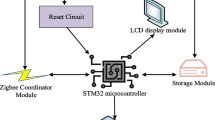Abstract
Three layer control structure is proposed for optimal control of continuous fermentation processes. The start-up optimization problems are solved as a first step for optimization layer building. A steady state optimization problem is solved by a decomposition method using prediction principle. A discrete minimum time optimal control problem with state delay is formulated and a decomposition method, based on an augmented Lagrange's function is proposed to solve it. The problem is decomposed in time domain by a new coordinating vector. The obtained algorithms are used for minimum time optimal control calculation of Baker's Yeast fermentation process.
Similar content being viewed by others
Abbreviations
- x(t) g/l:
-
biomass concentration
- s(t) g/l:
-
limiting substrate concentration
- x 0 g/l:
-
inlet biomass concentration
- s 0(t) g/l:
-
inlet substrate concentration
- D(t) h−1 :
-
dilution rate
- μ(t) h−1 :
-
specific growth rate
- Y g/g:
-
yield coefficient
- ɛ(t) h−1 :
-
specific limiting substrate consumption rate
- k D h−1 :
-
disappearing constant
- w 1, w 2 :
-
known constant or piece-wise disturbances
- μ m h−1 :
-
maximum specific growth rate
- k s g/l:
-
Michaelis-Menten's parameter
- τ h:
-
time delay
- x 0, s 0 g/l:
-
initial concentrations
- ¯x, ¯s, ¯D :
-
optimal steady state value
- V min , V max , v=x,s,d,Δt :
-
bounds of variables
- Δt h:
-
sampling period
- K :
-
number of steps in the optimization horison
- Js, J d :
-
performance indexes
- L s :
-
Lagrange's function
- L d :
-
Lagrange's functional
- λ 0 :
-
weighting coefficient for the amount of the limiting substrate throwing out of the fermentor
- λ 1, λ2 :
-
dual variables of Lagrange's function
- \(\alpha _s^1 ,{\text{ }}\alpha _{\lambda _1 }^1 ,{\text{ }}\alpha _{\lambda _2 }^1 \) :
-
steps in steady state coordination procedure
- \(\varepsilon _s ,{\text{ }}\varepsilon _{\lambda _1 } ,{\text{ }}\varepsilon _{\lambda _2 } \) :
-
errors values for steady state coordination process
- λ v , v=x, s :
-
conjugate variables of Lagrange's functional
- μ v , v=x,s :
-
penalty coefficients of augmented Lagrange's functional
- ϱ v , v=x, s :
-
interconnections of the time
- e v , v=x,s, D, λ x , λ s :
-
gradients of Lagrange's functional
- j, l :
-
indexes of calculation procedures
- ɛ :
-
values of errors in calculations
References
Abulesz, E.; Lyberatos, G.: Periodic operation of a continuous culture of baker's yeast. Biotech. and Bioeng. 34 (1989) 741–749
Bastin, G.; Dochain, D.: On-line estimation and adaptive control of bioreactors, Elsevier, Sc. Publ. 1990
Bertsecas, D.: Constrained optimization and Lagrange multiplier methods, New York: Academic Press 1982
D'Ans, G.; Gotlieb, D.; Kokotovic, P.: Optimal control of bacteria growth. Automatica 8 (1972) 729–736
Lin, S.: A hardware implementable two-level parallel computing algorithm for general minimum time control. IEEE Trans. on Automatic Control. 37 (1992) 589–603
MacDonald, N.: Time delays in chemostat models. In: Microbiol Populations Dynamics, Chap. 2. Boca Raton: CRC Press 1982
Maeda, K.: A multilayer control for anaerobic digestion process Prepr. of I-st IFAC Symp. on Modelling and Control of Biotech. Processes, pp 24–250. Noorwijkerhout 1985
O'Neil, D.; Liberatos, L.: Dynamic model development for a continuous culture of Saccharomyces cerevisiae. Biotech. and Bioeng. 22 (1990) 437–445
Patarinska, T.; Petrova, M.: A study on the effect of neglecting “cultre memory” estimates in optimal control. Prepr. of 7-th Prague Symp. on Computer Simulation in Biology, Ecology and Medicine, pp 77–80. Prague 1992
Sen, K.; Stephanopoulos, G.: The effects of growth rate delays in substrate inhibited kinetics on the optimal profile of fed-batch reactors. Biotech. and Bioeng. 28 (1986) 356–361
Staniskis, J.: Optimal control for biotechnical processes. Vilnjus: Mocslas 1984 (in Russian)
Stephanopoulos, G.: A new approach to bioprocess modeling, Prepr. of I-st IFAS Symp. on Modelling and Control of Biotechn. Processes, pp 223–228. Noordwijkerhout 1985
Tamura, H.: Decentralized optimization for distributed lag models of discrete systems. Automatica 11 (1975) 593–602
Tsoneva, R.; Patarinska, T.; Georgieva, O.: Decomposition method for optimization of xanthan gum fermentation process, Chem. Biochem. Eng. Q. 7 (1993) 149–154
Yamane, T.; Sada, E.; Takamatsu, T.: Start-up of Chemostat: Application of fed-batch culture, Biotechn. and Bioeng. 21 (1979) 111–126
Yi, G.; Hwang, Y.; Chang, H.; Lee, K.: Computer control of cell mass concentration in continuous culture. Automatica 25 (1989) 243–249
Author information
Authors and Affiliations
Additional information
The researches was supported by National Scientific Research Foundation under grants No NITN428/94 and No NITN440/94
Rights and permissions
About this article
Cite this article
Tsoneva, R.G., Patarinska, T.D. Optimal control of continuous fermentation processes. Bioprocess Engineering 13, 189–196 (1995). https://doi.org/10.1007/BF00367253
Received:
Issue Date:
DOI: https://doi.org/10.1007/BF00367253




